Ethical approval is needed for most research work before it can be carried out although processes and requirements tend to differ across disciplines, funders and institutions. Many institutions use standalone systems to manage the approval process, with potential for duplication of effort, while Current Research Information Systems (CRIS) provide varying levels of support for ethical review information.
- The CONVERIS CRIS does already support ethics review and is being used for this purpose by UK user institutions. However functionality is currently limited compared to what is being developed – Avedas are working with CASRAI (as described below) at the same time as reviewing institutional requirements in order to develop configurable forms, workflows and user rights for CONVERIS (systems programming changes are not anticipated). The CONVERIS specification will be aligned with CASRAI work.
- Although Symplectic Elements could currently support the capture of ethics review information such as an ethics status flag, institutional users have not yet expressed this requirement; it is thought that most Symplectic users currently capture ethics information either offline or in pre-award/clinical trial systems.
- Likewise Atira report that Pure users have not requested support for ethics review, so it is not currently provided within Pure (apart from a flag to remind staff to initiate ethics review) and there are no plans to change this for the moment.
Therefore while one of the drivers for the Research Management and Administration System – Ethics Extension (RMAS-EE) work was the need to raise awareness of the role that ethical review plays in research projects, another was to reduce administrative overheads. It was funded by the Jisc research information management (RIM) programme as a rapid innovation project, starting in July 2012 and finishing in December 2012.
As its name indicates, the project extends the work of the earlier RMAS project which developed a Procurement Framework to enable universities to purchase individual research management system modules using a simplified and much-shortened procurement process. It also developed tools and guidelines to help institutions integrate new modules with existing research systems and corporate systems. RMAS uses CERIF for the representation of data and worked with euroCRIS to extend the CERIF vocabulary to meet UK requirements. An Enterprise Service Bus (ESB) facilitates the exchange of messages (encapsulated in CERIF) between different research management applications.
The RMAS-EE project was based at the University of Kent, one of the three RMAS ‘pathfinder’ institutions. However the blog points out that the project team at Kent was not involved in the original RMAS project and was therefore dependent on RMAS documentation to understand the applications. The project consequently provided a useful case study for RMAS as a side product.
Prototyping the integration of the ethical review of research proposals into the RMAS framework was the central aim of RMAS-EE. Additional aims as indicated included informing the CERIF data standard so that it is better able to describe ethical review information.
The existing OpenEthics software was adopted to manage the ethics review process. The project planned to use the RMAS Supplier Agnostic Connector (which is based on a commercial product) between OpenEthics and RMAS to translate to and from CERIF. However investigation revealed that expected specifications were missing (for the proposal-created message in particular) so it was decided to use the project team’s expertise in Python to write the required software instead. Another issue encountered was synchronising users across RMAS and the OpenEthics system. A mapping solution was developed for the project, but this will be a problem that any other integration work will also need to address.
The original plan was to contribute to the CASRAI data dictionary as well as the CERIF standard; while this proved to be unnecessary to meet immediate project needs, the University of Kent is continuing to work with CASRAI on the structure of an ethical review application, which would allow interoperability of different systems for managing ethical review. Agreeing the status definitions (whether a project has been approved or not) will be the first step. The project participated in the inaugural CASRAI UK chapter meeting in December 2012. Avedas (developers of CONVERIS) are also part of the CASRAI UK Ethics Review working group.
One of the project’s conclusions was that ‘ RMAS as a concept works brilliantly’. However the team has expressed several concerns about the broader RMAS environment. Firstly the lack of RMAS event specification and a production ready ESB means that integrating with RMAS is very difficult (it was acknowledged that only the team’s strong technical capabilities made this possible). Secondly, there is no evidence of an RMAS user community – when the project proposed a specification for discussion, there was no response. As a result it was not possible for the project to test the claim that integrating research ethics into RMAS allows enhanced reporting of ethical review data in the broader research information context, because there were no other systems to integrate with via RMAS.
The project has been useful in initiating further activity relating to ethics review in the international standards communities, specifically euroCRIS and CASRAI. It is less clear if awareness has been raised in the wider UK research information management communities (a diverse group). A key output of the project is the proposal to euroCRIS for including ethical review Status in the CERIF vocabulary. The terms are currently under consideration by the CERIF Task Group. As well as software outputs, the project has also made a lot of technical documentation available via the blog which could be useful for future RMAS integration work.
]]>


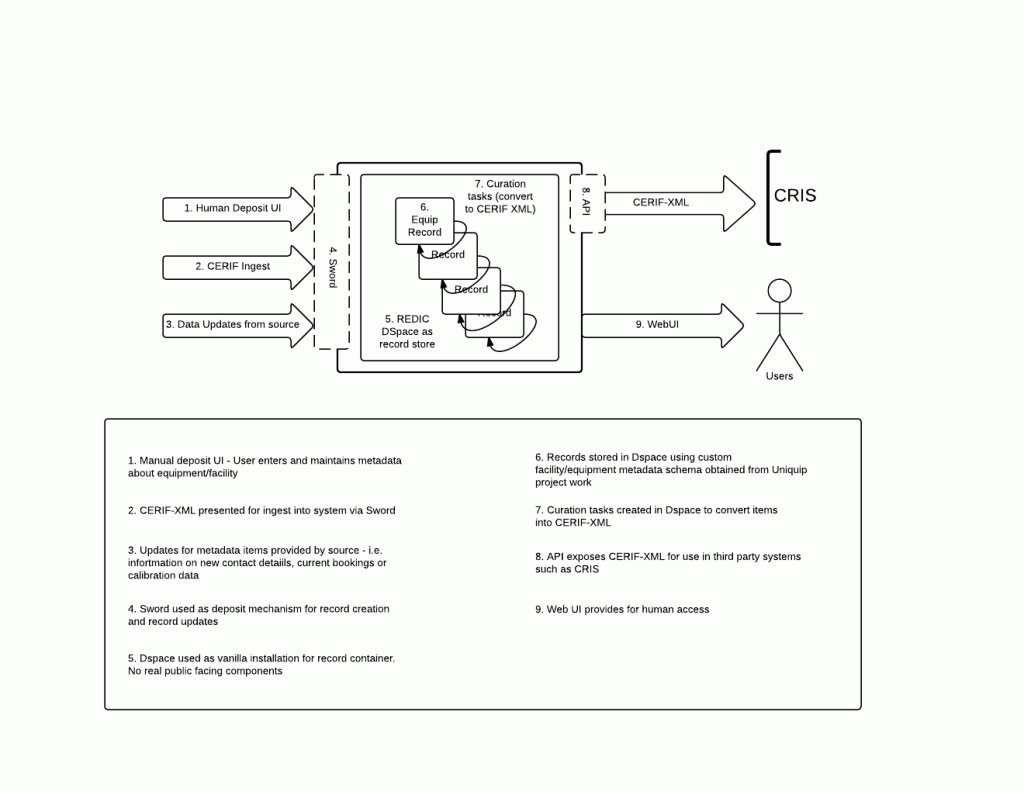
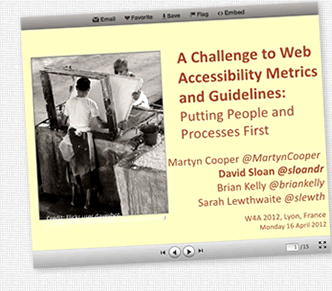

 JISC Observatory has released a preview version of a forthcoming TechWatch report: Preparing for Effective Adoption and Use of eBooks in Education. Comments are welcome on this report to help shape its coverage and guidance to Higher and Further Education sectors. The feedback period is open from 27 September to 8 October 2012.
JISC Observatory has released a preview version of a forthcoming TechWatch report: Preparing for Effective Adoption and Use of eBooks in Education. Comments are welcome on this report to help shape its coverage and guidance to Higher and Further Education sectors. The feedback period is open from 27 September to 8 October 2012.
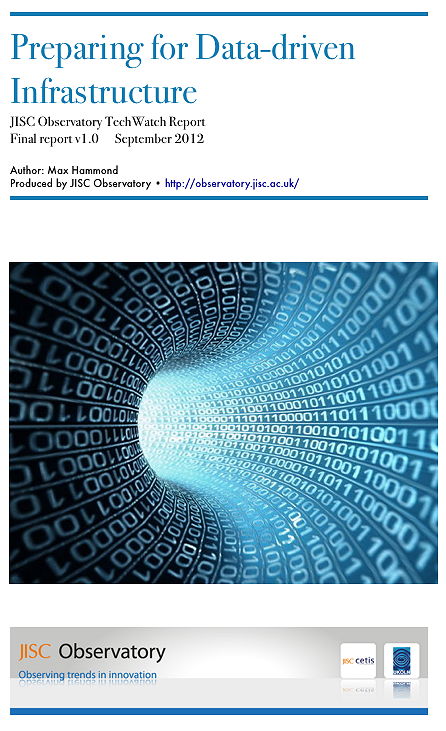 The JISC Observatory has published the latest TechWatch report on Preparing for Data-driven Infrastructure, which highlights approaches institutions should consider if they wish to exploit a data-driven infrastructure.
The JISC Observatory has published the latest TechWatch report on Preparing for Data-driven Infrastructure, which highlights approaches institutions should consider if they wish to exploit a data-driven infrastructure.

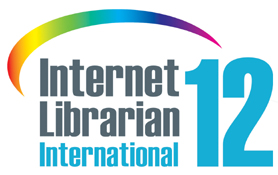 As described in a recent post a paper by myself and Jenny Delasalle entitled “Can LinkedIn and Academia.edu Enhance Access to Open Repositories?” was presented at the Open Repositories conference, OR 2012. This work was based on activity undertaken by the UKOLN ISC to explore ways in which content hosted in institutional repositories can be made easier to find. Increasingly such work is informed by evidence-based approaches which seek to interpret quantitative evidence of the value of particular approaches.
As described in a recent post a paper by myself and Jenny Delasalle entitled “Can LinkedIn and Academia.edu Enhance Access to Open Repositories?” was presented at the Open Repositories conference, OR 2012. This work was based on activity undertaken by the UKOLN ISC to explore ways in which content hosted in institutional repositories can be made easier to find. Increasingly such work is informed by evidence-based approaches which seek to interpret quantitative evidence of the value of particular approaches.
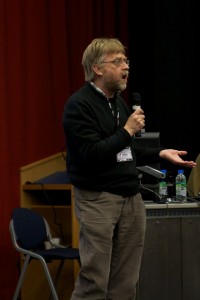
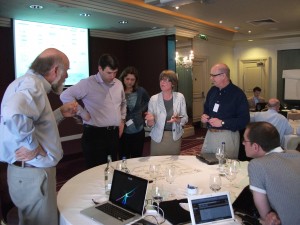
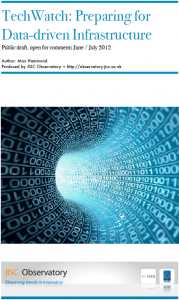 The JISC Observatory service, provided by the ISC at UKOLN and JISC CETIS, is pleased to announce the publication of a preview version of the Preparing for Data-driven Infrastructure TechWatch report. This report, written by Max Hammond, provides an overview of key data-management concepts and approaches as well as practical tools available to Higher Education and Further Education. This report can be used to help organisational planning and to inform data-management strategies.
The JISC Observatory service, provided by the ISC at UKOLN and JISC CETIS, is pleased to announce the publication of a preview version of the Preparing for Data-driven Infrastructure TechWatch report. This report, written by Max Hammond, provides an overview of key data-management concepts and approaches as well as practical tools available to Higher Education and Further Education. This report can be used to help organisational planning and to inform data-management strategies.
 UKOLN’s annual Institutional Web Management Workshop, IWMW 2012, was held at the University of Edinburgh on 18-20 June 2012. The three-day event attracted 172 delegates in total. There were a total of 14 plenary sessions together with 19 parallel sessions.
UKOLN’s annual Institutional Web Management Workshop, IWMW 2012, was held at the University of Edinburgh on 18-20 June 2012. The three-day event attracted 172 delegates in total. There were a total of 14 plenary sessions together with 19 parallel sessions.
